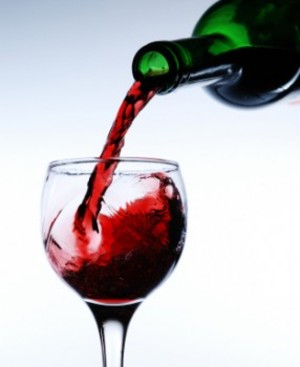
Wine Wars
Where does the best wine come from?
Wine lovers are passionate people. If you doubt this, simply ask a devotee or two the question above. Be prepared, however. The answers are sure to be varied, entertaining and (hopefully) enlightening.
At some point, an element of regional pride may creep into the conversation. For example: “I KNOW the best wines come from my hometown!”
Actually, I am fairly certain that some of the best wines DO come from my hometown of Walla Walla, Washington. By way of evidence, I point to the list of top 100 wines published every year by Wine Spectator Magazine.*
Pick any year and scroll down the page. You are almost certain to find one or two (or more) Walla Walla wines featured. Okay, okay enough of this; see what I mean about wine lovers being passionate?
Anyway, let’s step back from the debate for a moment and offer up some objectivity by way of a brief history lesson.
The “common” grape
Fine wines are made from a particular species of grape known as Vitis vinifera. Wild varieties of Vitis vinifera are believed to have originated from the Mediterranean, central European, and southwestern Asian regions. Nowadays, Vitis vinifera grapes are cultivated on every continent except Antarctica.
The earliest evidence of winemaking practices can be found in Egyptian hieroglyphics, as well as in Roman and Greek texts. In ancient times, wine grape cultivation and winemaking seems to have been primarily reserved for the ruling class.
Roots of modern winemaking
During the European Renaissance (14th to 16th centuries) wine grape cultivation and wine-making began a shift from traditional methods to more scientific ones. As European countries (notably France, Italy and Spain) began to colonize the world, they took their grapes and wines with them. Because of this, an important distinction arose between the New World (the colonies) and the Old World (the colonizers).
Old World vs. New World
Why is the distinction between Old World and New World wines important? There are several reasons. Let’s talk about a few of them…
Regulation
Winemakers in Old World countries have been making wine the same way for centuries. This is because of restrictions placed upon them by governmental and/or other supervisory organizations. On the one hand, this regulation assures a continuation of heritage and tradition. On the other hand it leaves little room for variety or experimentation.
True to the pioneering spirit, New World winemakers are afforded more freedom to follow their own concept for a particular vintage. It is also often easier for New World winemakers to incorporate the newest discoveries, techniques and advances in technology into their wine-making process.
One of the ways in which New World does follow Old is by way of a system of Appellation. The word “appellation” comes from the French verb “appeler.” It means ‘to call or name.”
Appellations are used to identify the particular source of grapes used in wine. Usually, it is a legally defined geographic region, but can also require other specifications as well. Each country has its own rules for bestowing Appellation status.
Of course, Old World Appellations have been in place for centuries. New World appellations are still being granted.
I remember when our Walla Walla Valley gained this distinction. The year was 1984 and, at that time, there were really only a handful of wineries and vineyards in the area. My sister-in-law had been tasked with helping to fill out the AVA paperwork. AVA stands for American Viticultural Area.
Although we were a fairly small “band of believers,” it was still very exciting when we got word the Walla Walla Valley Appellation had been recognized. Somehow we knew that our little valley was destined for great things in the world of wine. (Oops! There is that passion thing again.)
Vive la difference!
To be sure, there is no lack of variety among Old World wines. With such rich histories and diversity of language and culture, how could there not be? In addition to stricter regulation, however, there are other factors to consider when discussing the topic of New World wines vs. Old World wines.
In my next post I would like to delve into the concept of “Terroir,” (another word borrowed from the French).
Until then, try not to let your passion get the better of you!
Ciao for now,
Ron
